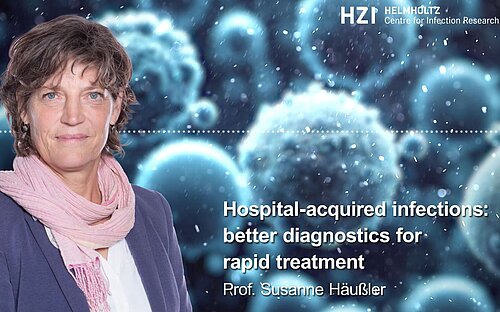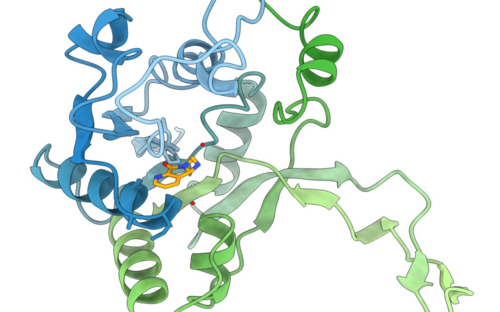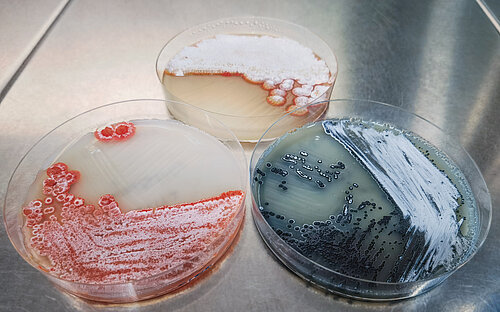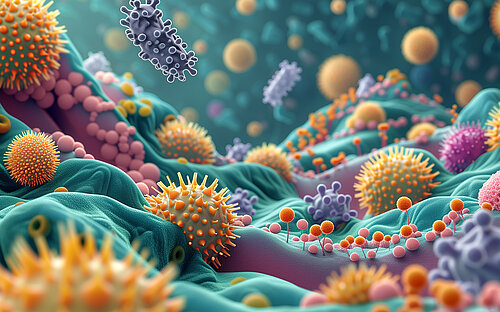Antibiotics
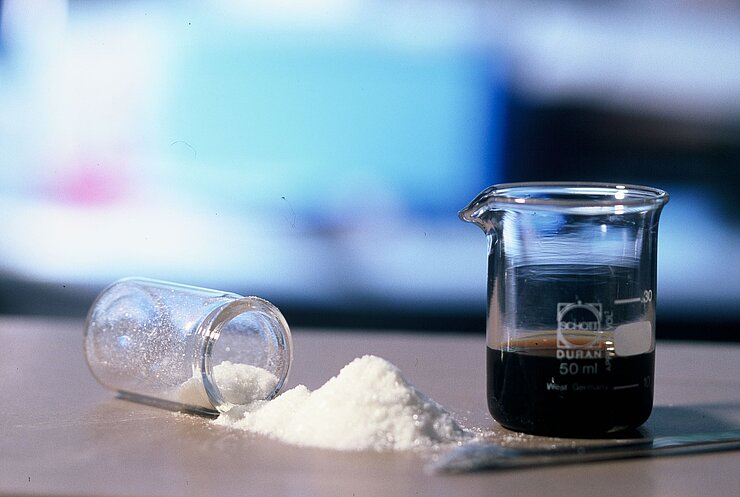
To the present day, antibiotics are among the most effective weapons available for fighting bacterial infections. They are one of the most important medical discoveries of modern times and have saved innumerable human lives.
Beating bacteria at their own game
Bacteria protect themselves from the environment using their cell wall. This outer shell, which consists of carbohydrates, also counters the effects of the osmotic pressure that prevails within the bacterial cell. When a bacterium divides, a special enzyme known as D-D transpeptidase ensures that the components of the cell wall are newly cross-linked. This is precisely the process targeted by penicillin, the first antibiotic to be discovered: it blocks the bacterial enzyme and thus prevents the microbes from dividing. Penicillin is produced from a mould fungus of the genus Penicillium, which can thereby protect itself from bacterial attacks. This is why the Scottish scientist Alexander Fleming was able to observe that in a bacterial culture contaminated with this fungus no bacteria grew in the proximity of the fungus.
It took another few years for this antibiotic effect to be tested on humans. Researchers in the 1940s and 1950s quickly discovered other substances formed by bacteria or fungi that inhibit the growth of other microbes or even destroy them. To the present day, antibiotics are among the most effective weapons available for fighting bacterial infections. They are one of the most important medical discoveries of modern times and have saved innumerable human lives. Antibiotics are produced synthetically or by using biotechnology.
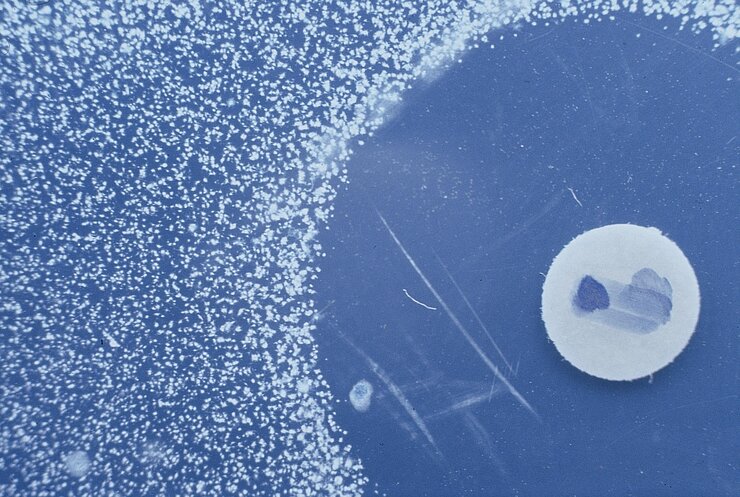
Antibiotics - a wonder weapon?
Because they target structures that only arise in bacteria, antibiotics do not influence human metabolism. On the other hand, they are also useless against viruses, which have no metabolic system of their own. Unfortunately, doctors often prescribe antibiotics for colds, despite the fact that they are almost always caused by viruses. This inappropriate use, the premature termination of antibiotic treatment and their inconsistent consumption result in the emergence of an undesirable phenomenon: the spread of antibiotic resistance.
Bacteria can develop mechanisms for evading the effect of antibiotics. They can either alter the target of the drugs in such a way that it is no longer recognised by the antibiotic or produce molecules that enable them to render the antibiotic harmless. Moreover, bacteria can pass their newly acquired resistance mechanisms to other bacteria. The use of antibiotics for promoting growth and preventing disease in livestock breeding is also debated by experts as a cause of the increasing spread of antibiotic resistance.
Even the most minor bacterial infections can become dangerous as a result of antibiotic resistance. Multi-resistant bacterial strains, against which a number of different antibiotics are powerless, are spreading. According to the World Health Organisation, in the European Union, Iceland and Norway alone, every year 25,000 people die of bacterial infections that can no longer be treated using antibiotics. The European Centre for Disease Prevention and Control estimates that the financial damage suffered indirectly by the European Union due to antibiotic resistance amounts to 1.5 billion euros. Without antibiotics, not only would it be difficult to treat bacterial infections, organ transplants, chemotherapy and surgical interventions would also have far lower success rates. To prevent us from backsliding to an era similar to that which existed before the discovery of antibiotics, scientists are searching for new classes of antibiotics.
![[Translate to English:] Myxobakteriums Chondromyces Crocatus.](/fileadmin/_processed_/3/0/csm_HZI_WissFoto_myxo_nbio_001_ba36b915d5.jpg)
A race against the bacteria
Drug discovery is a topic of particular importance at the HZI. Several of the centre’s research groups dedicate their work to different aspects of this task. Some working groups use automated test processes to search through libraries containing thousands of substances for compounds that could be of interest from a therapeutic point of view. Others focus on bacterial groups, like myxobacteria and actinomycetes, which have already been identified as promising sources of active substances. However, the microbiologists, biotechnologists, pharmacists and natural products chemists at the HZI are also interested in organisms that have not yet been extensively studied. Using nature as a model, some scientists recreate antibiotics chemically to decode their mechanisms of action and to further optimise them.
(bma)
Involved research groups
-
Anti-infectives from Microbiota
 Prof Dr Christine Beemelmanns
Prof Dr Christine Beemelmanns -
Antimicrobials through Chemoenzymatic Synthesis
 Dr Alexander Kiefer
Dr Alexander Kiefer -
Biomarkers of Infectious Diseases
 PD Dr Frank Pessler
PD Dr Frank Pessler -
Chemical Biology
 Prof Dr Mark Brönstrup
Prof Dr Mark Brönstrup -
Chemical Biology of Carbohydrates
 Prof Dr Alexander Titz
Prof Dr Alexander Titz -
Epidemiology and ecology of antimicrobial resistance
 Prof Dr Katharina Schaufler
Prof Dr Katharina Schaufler -
Genome Mining for Secondary Metabolites
 Dr Chengzhang Fu
Dr Chengzhang Fu -
Human-Microbe Systems Bioinformatics
 Jun Prof Dr Alexey Gurevich
Jun Prof Dr Alexey Gurevich -
Infection Immunology
 Prof Dr Eva Medina
Prof Dr Eva Medina -
Actinobacteria Metabolic Engineering
 Dr Andriy Luzhetskyy
Dr Andriy Luzhetskyy -
Microbial Natural Products
 Prof Dr Rolf Müller
Prof Dr Rolf Müller -
Microbial Drugs
 Prof Dr Marc Stadler
Prof Dr Marc Stadler -
Molecular Bacteriology
 Prof Dr Susanne Häußler
Prof Dr Susanne Häußler -
Natural Product Biotechnology
 Prof Dr Tobias Gulder
Prof Dr Tobias Gulder -
Natural products from underexplored pathways and extreme environments
 Dr Florian Hubrich
Dr Florian Hubrich -
Pharmacokinetics and Pharmacodynamics
 Dr Katharina Rox
Dr Katharina Rox -
RNA Biology of bacterial infections
 Prof Dr Jörg Vogel
Prof Dr Jörg Vogel -
Drug Bioinformatics
 Prof Dr Olga Kalinina
Prof Dr Olga Kalinina -
Drug Design and Optimization
 Prof Dr Anna K. H. Hirsch
Prof Dr Anna K. H. Hirsch
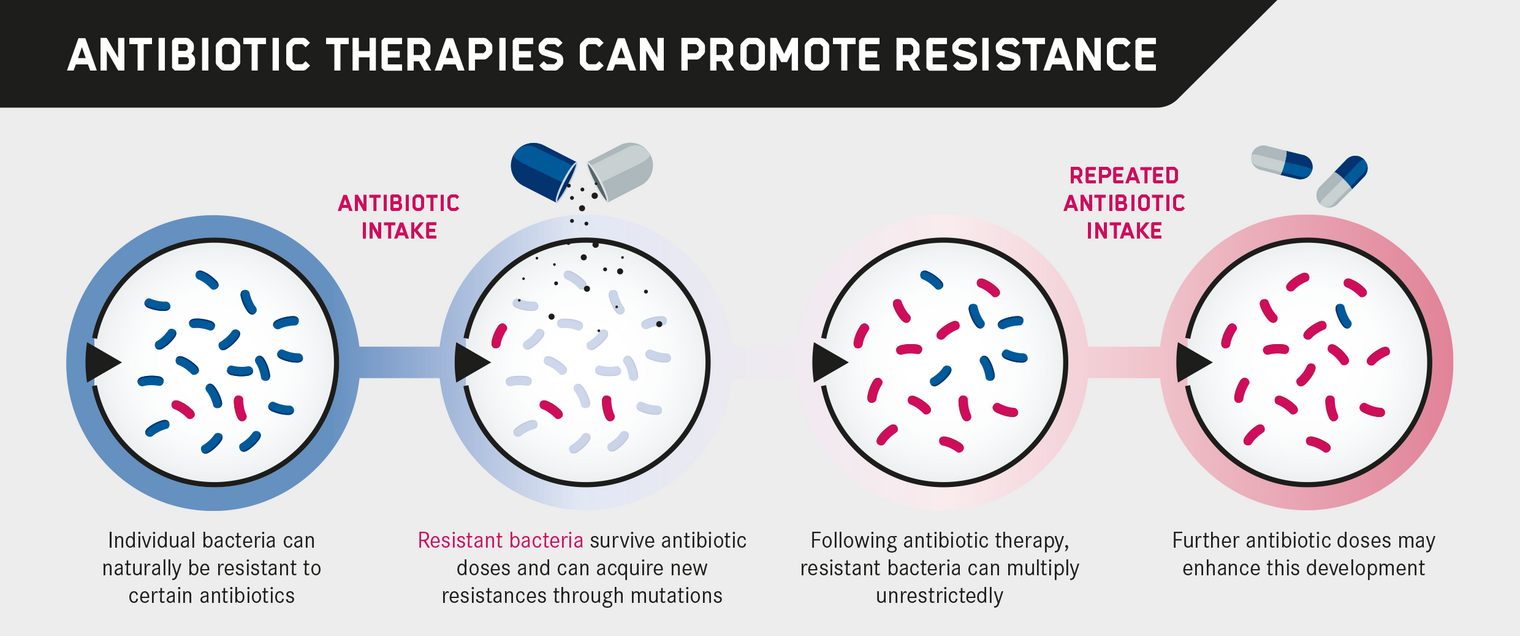


![[Translate to English:] Rasterelektronenmikroskopische Aufnahme einer Escherichia coli-Zelle (rot), die von Bakteriophagen (grün) infiziert wird.](/fileadmin/_processed_/1/6/csm_Escherichia_coli_phage_8c7e69405a.jpg)
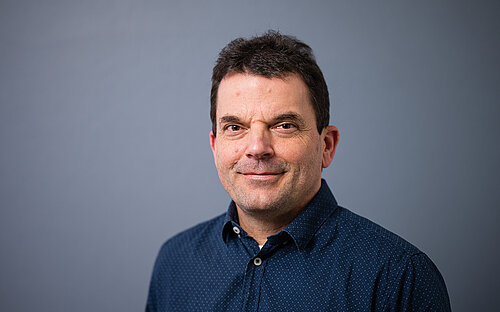
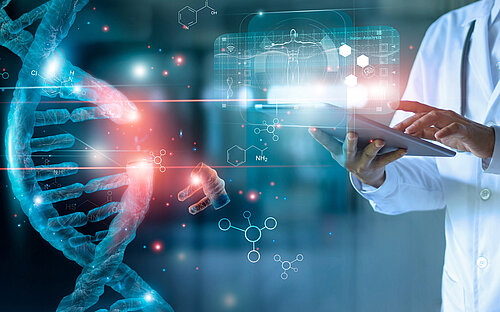
![[Translate to English:] Empfangsschild des Arabuko-Sokoke-Nationalparks](/fileadmin/_processed_/1/4/csm_arabuko_2_6e2dbb2103.jpg)
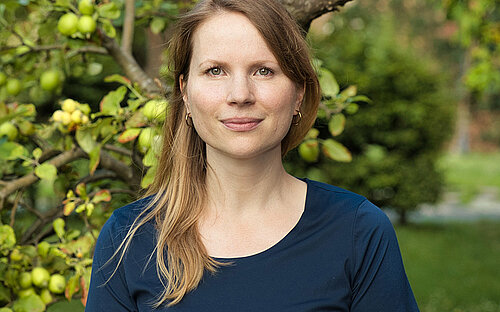

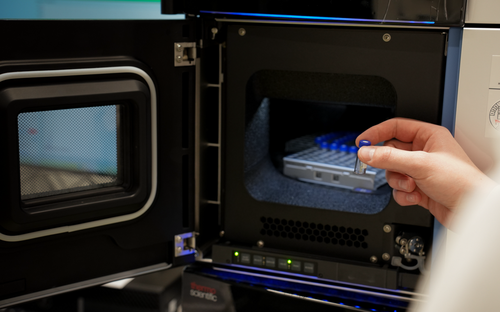
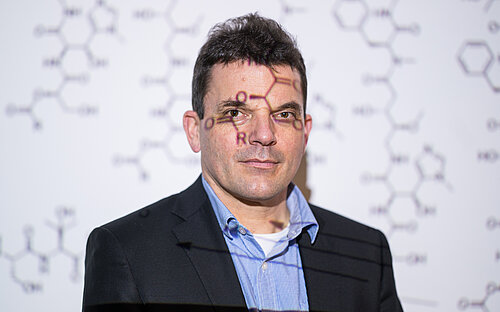
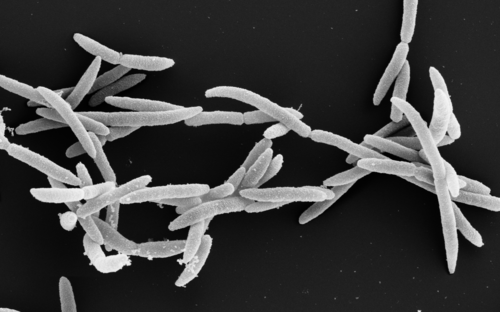
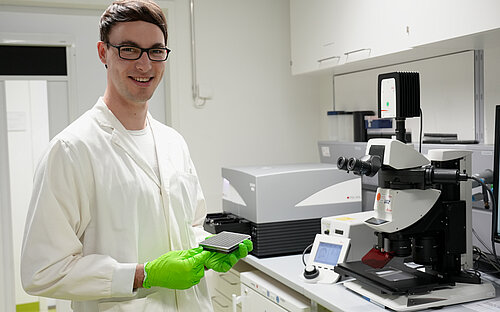
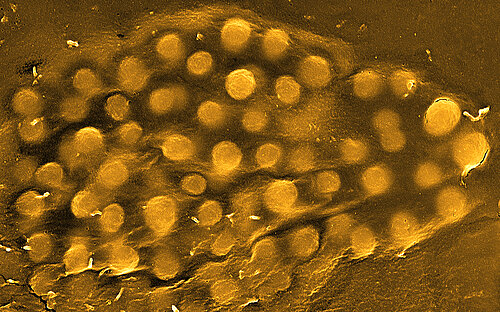
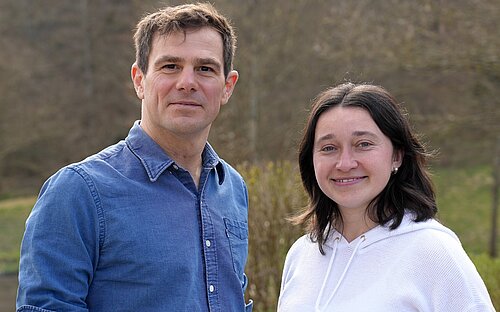
![[Translate to English:] 3D-kontrastierte Oberflächenstruktur von LasB (beige) mit einem Inhibitor der 3. Generation (dunkelblau), der Zink (grau) bindet.](/fileadmin/_processed_/8/b/csm_LasB_Foto_9cb0b6a1c3.png)
